 Interactive Architecture, by Michael Fox and Robert Miles Kemp (Available on Amazon USA and UK.)
Interactive Architecture, by Michael Fox and Robert Miles Kemp (Available on Amazon USA and UK.)
Publisher Princeton Architectural Press says: Interactive Architecture is a processes-oriented guide to creating dynamic spaces and objects capable of performing a range of pragmatic and humanistic functions. These complex physical interactions are made possible by the creative fusion of embedded computation (intelligence) with a physical, tangible counterpart (kinetics). A uniquely twenty-first century toolbox and skill set–virtual and physical modeling, sensor technology, CNC fabrication, prototyping, and robotics–necessitates collaboration across many diverse scientific and art-based communities. Interactive Architecture includes contributions from the worlds of architecture, industrial design, computer programming, engineering, and physical computing. These remarkable projects run the gamut in size and complexity. Full-scale built examples include a house in Colorado that programs itself by observing the lifestyle of the inhabitants, and then learns to anticipate and accommodate their needs. Interactive Architecture examines this vanguard movement from all sides, including its sociological and psychological implications as well as its potentially beneficial environmental impact.
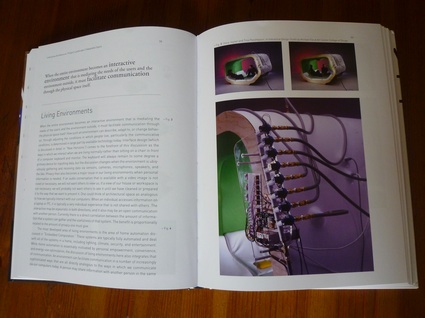 A view inside the book
A view inside the book
To be honest, i wasn’t expecting to be so impressed with the book. I’ve read and even reviewed e few books on similar topics. They are sexy, glossy, intelligent, packed with jaw-dropping examples of interactive architecture, they have the right amount of geekiness (it feels serious but not to the point of putting off a dilettante like me), their excitement is contagious. This book goes further though.
Interactive Architecture explores the trends, promises, means and ways of IA as well as its sociological and psychological implications. Kemp and Fox embrace innovation and cutting edge developments but they are also wary of being over-enthusiastic. Throughout the book they tackle issues that are essential to but also challenging for the field of IA: its economical feasibility, the need for a new pedagogical approach, the necessity of a cross-discipline communication, the questions raised by privacy, ethics, environmental impact or convenience. The book doesn’t waste time on the fairground aspects of everything interactive. Right from the start, the authors question the way interactivity is conceived today by refering to the pioneering works and reflections done by the cyberneticians of the early ’60s. Their idea of interactivity was a two-way street, a ‘conversation’ between the human and the machine, no a mere reactive approach. Their work and ideas are coming back in favour today thanks to the likes of Usman Haque and Ruairi Glynn.
The works that illustrate the book keep you on a roller-coaster: you might read about the way interactive architecture can help care for the elderly but a few pages later you enter sexier waters with Daan Roosegaarde‘s 4D-Pixel installation or with Servo + Smart Studio’s Lattice Archipelogics.
Interactive Architecture is a very approachable -but intense- crash course for anyone who look for an in-depth study of the IA field. It is also a book to put into the hands of the most devoted expert.
Some of the projects and directions discussed by the book:
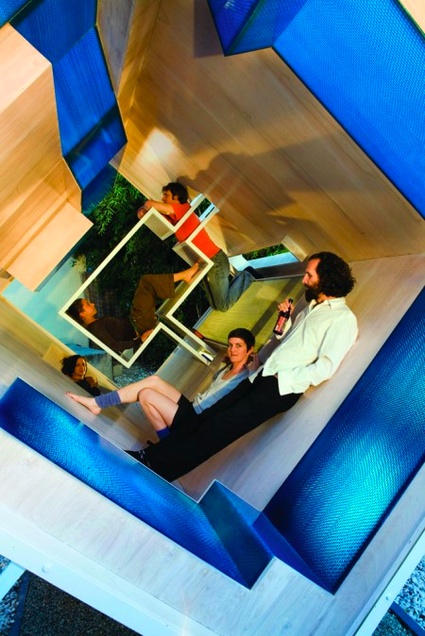 With Phalanstery Module, Jimenez Lai explores how, in the absence of gravity, all surfaces rotate and can therefore be occupied
With Phalanstery Module, Jimenez Lai explores how, in the absence of gravity, all surfaces rotate and can therefore be occupied
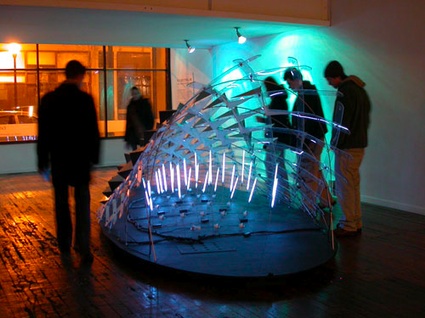 Future Cities Lab, Vivisys Prototype is an acrylic lattice vault that supports an interactive soundscape and networked auroras of blue cold cathode tubes
Future Cities Lab, Vivisys Prototype is an acrylic lattice vault that supports an interactive soundscape and networked auroras of blue cold cathode tubes
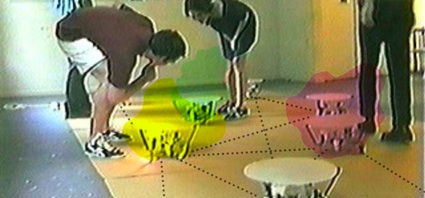 Usman Haque, Moody Mushroom Floor is a smell/sound/light floor that develops moods and aspirations in response to the ways that people react to the invidual outputs
Usman Haque, Moody Mushroom Floor is a smell/sound/light floor that develops moods and aspirations in response to the ways that people react to the invidual outputs
 Bubbles, by Foxlin, NONDesigns and Brand Name Label, is a spatially adaptable environment made of air-bags or “bubbles” that inflate and deflate in reaction to visitors pushing or bumping the lower inflated volume. Photo credit: Rob Kassabian
Bubbles, by Foxlin, NONDesigns and Brand Name Label, is a spatially adaptable environment made of air-bags or “bubbles” that inflate and deflate in reaction to visitors pushing or bumping the lower inflated volume. Photo credit: Rob Kassabian
 Open Columns, by Omar Khan, investigates the use of responsive elastomer constructions for patterning spatial inhabitation
Open Columns, by Omar Khan, investigates the use of responsive elastomer constructions for patterning spatial inhabitation
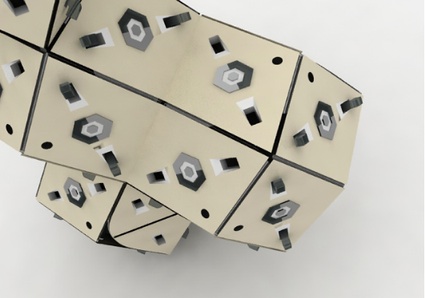 Robert Miles Kemp, Meta-morphic architecture is made of tiny robots that, one day, could come together to build physical structures and later re-configure itself to create another one if needed
Robert Miles Kemp, Meta-morphic architecture is made of tiny robots that, one day, could come together to build physical structures and later re-configure itself to create another one if needed
Image on the homepage by Rob Kassabian.







